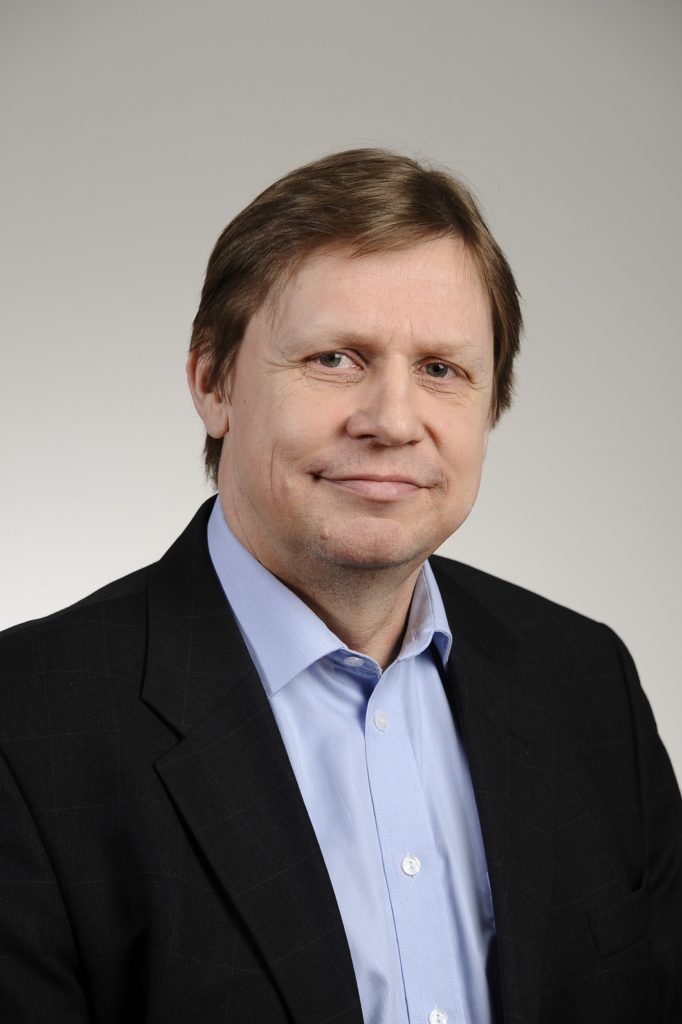SmartEEs – Smart Emerging Electronics Servicing, offers an organized European innovation network to facilitate SME access to skills and technologies to implement flexible electronics in their product lines.
Let’s have a closer look at who are SmartEEs’ experts and what solutions SmartEEs can provide!
The word of the experts
LicTech Ilkka Kaisto led Printocent for over 10 years until the end of August 2020 and is now working as a Senior Advisor. He was also the Project Coordinator for the FP7- COLAE –project (Commercialisation Clusters for Organic and Large Area Electronics), which is the precursor to the SmartEEs projects. In SmartEEs, Ilkka Kaisto and the VTT team are involved the technical support and the innovation management of the application experiments.
SmartEEs: With Printocent and VTT, you have built a very strong Finnish ecosystem around flexible intelligence & electronics. Why is it important for you and your team to be part of the SmartEEs consortium?
PrintoCent is a Hub for Printed Intelligence commercialization and industrialization founded by VTT, the University of Oulu, Oulu University of Applied Sciences and Business Oulu. Since 2010, it has gathered a global industry cluster, a pilot factory manufacturing environment and an innovation accelerator with over 30 start-ups. But PrintoCent has developed a cluster having not only regional Oulu-based companies but companies largely from Finland and also from Europe. It also has developed an international network of clusters. The co-operation between international clusters was deepened during the COLAE –project gathering 17 partners in the EU working on electronic components. Early prototypes were brought in sight to promote flexible electronics. Since then various EU-projects have supported technology development, but the two SmartEEs projects have substantially boosted the prototyping and business case development of SMEs. Furthermore, they have strengthened the European value chain creation, as industry and RTOs around the EU have been jointly involved in the Application Experiments.
PrintoCent has also had a role in bringing industry, research and innovators together to work around an idea, as shown by the annual PrintoCent Innofest. Over 20 teams have been competing, pitching and developing their ideas in a 2-day international event, where many SmartEEs consortium members have been participated. Several companies like Movesole, New Cable Corporation, GreenerCell, have their roots in Innofest. Another important event has been the PrintoCent Industry Seminar, (PRINSE)-seminar, happening every second year and focusing on Industry Needs and Applications. Lately, due to COVID-19 we have been running the PrintoCent Webinar Series
SmartEEs: What were the main challenges PrintoCent and VTT had to face when building this ecosystem or developing those technologies?
I see three main challenges: building trust, making people from different backgrounds to work together and developing pilot manufacturing environment.
The first & main challenge has been building trust among researchers and companies, to make them confident that open innovation will stimulate and speedup the creation of new business cases. Another challenge has been making people with different backgrounds and education – technology, commercial – understand each other when building new business cases.
The last challenge was to develop the Pilot Manufacturing Environment to enable the scale-up of prototypes in close co-operation with research and companies. When investing in Pilot Manufacturing in RTOs, you have to predict what processes would be taken in use in future value chains by companies. It is very important to have companies involved in the value chains as early as possible, especially in research projects, to bring industrial mindset into RTOs.
SmartEEs: During the last decade, Flexible electronics have made huge progress. According to you what is the biggest differentiation brought by this technology and what are the biggest success stories you have in mind? What are the main achievements you would like to highlight?
The biggest differentiation is to make multidisciplinary teams work together, as the materials, substrates, wiring, electronics, optics have to be integrated deeply to a thin and light-in-weight structure, which in many cases is encapsulated inside laminated glass, plastics or laminate.
There are several achievements related to energy efficiency and space & weight savings in automotive, such as TactoTek IMSE –process and integrating flexible functional foil inside laminated glass by NSG Pilkington. In future, the rigid PCBs will be substituted with for example smart wall or roof elements with integrated functionalities. In healthcare and wellness, we will also see new smart patches monitoring ourselves wirelessly.
